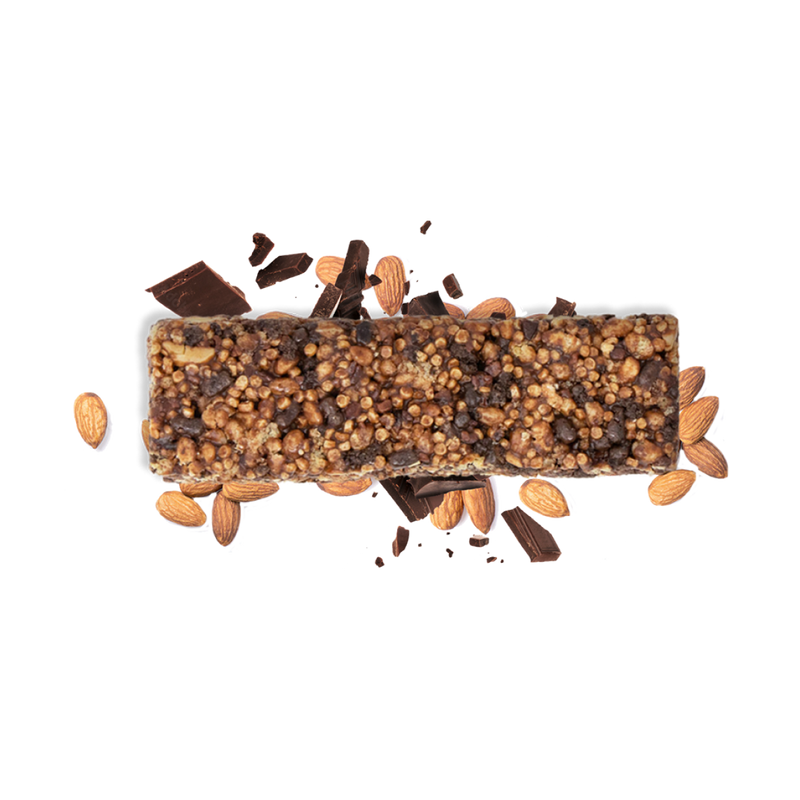What are carbohydrates?
Carbohydrates, too familiarly called sugars, are an essential fuel for the functioning of our body. They are differentiated by their structure and their effect on your body. There are two types of carbohydrates: simple carbohydrates and complex carbohydrates. They are all assimilated by the body thanks to digestive enzymes, unlike fibers which fall into the category of non-assimilable carbohydrates.
Simple carbohydrates.
Simple carbohydrates are made up of one subunit (monosaccharide) or two subunits (disaccharide).
Monosaccharides.
Fructose is mainly found in fruits, vegetables and honey. It has a good sweetening power and a low glycemic index. As a result, it does not induce insulin peaks and therefore no fatigue. Glucose is naturally present in honey, in certain fruits such as grapes and most often in industrial products in the form of syrup. The glycemic index of glucose is 100, so it causes sharp rises in blood sugar levels.
dddSucrose is a natural sugar extracted from sugar beets or sugar cane and is used to make the white sugar we all know. White sugar, in reasonable quantities, is not bad for your health. Isomaltulose is naturally present in honey and sugar cane. It can be produced industrially through the fermentation of sucrose. Its structure means that it is slowly digested by our body (low glycemic index).
Complex carbohydrates.
Unlike simple carbohydrates, complex carbohydrates are made up of more than two subunits. Complex carbohydrates are found in the form of starch in cereals, tubers and even legumes. These foods are grouped into the “starchy” category.
Maltodextrin is a complex carbohydrate which results from the partial transformation of starch. Its glycemic index varies depending on its level of refinement. The more maltodextrin is industrially modified, the higher this index will be.
The high content of Feed products. in fiber and protein helps reduce the overall glycemic index of our recipes and therefore does not induce significant blood sugar peaks.
In France, assimilable carbohydrates represent on average 40 to 45% of the average total energy intake, which is lower than the ANSES recommendations set at between 40 and 55%. This phenomenon can be explained by the overconsumption of foods rich in lipids and proteins to the detriment of food sources rich in carbohydrates such as bread, pulses and cereal products.
Did you know ?
The glycemic index (GI) measures the ability of a carbohydrate or food to increase blood glucose levels. The average fasting blood sugar level is between 0.7 and 1.1 gr/L. The higher the GI of a food, the more quickly it will raise blood glucose levels. The presence of fiber, proteins and lipids in your meals reduces the impact of the glycemic index of your foods by slowing down the transit and absorption of carbohydrates. If the foods have a low GI, the glucose from digestion is diffused more slowly in the body, which does not result in a blood sugar peak that is better distributed over time for a more lasting satiety effect.
What are the roles of carbohydrates in your body?
Carbohydrates play 2 main roles within our body: an energy role and a structural role.
- Energy role: glucose is the primary source of energy used by cells. 1 gram of carbohydrates provides 4 kcal.
Certain cells, called “glucodependent” such as red blood cells and neurons, can only use glucose as an energy source. The brain is always favored in its energy supply with a daily carbohydrate consumption of around 150 gr. The rest is distributed between the muscles and other organs.
- Structural role: Carbohydrates are part of the composition of all our cells but also of fundamental tissues of the body such as cartilage, mucus, skin, etc.
What foods are high in carbohydrates?
Simple carbohydrates are mainly present in fruits, vegetables and any other form of sugar (table sugar, honey, agave, etc.)
- Table sugar: 100 g
- Honey: 81.3 g
- Agave: 70.2 g
- Banana: 19.6 g
- Grape: 15.7 g
- Apple: 11.6 g
- Beetroot: 9 g
- Zucchini: 6.5 g
- Tomato: 2.6 g
Complex carbohydrates come from cereals (oats, rice, corn, etc.), tubers (potatoes, cassava, etc.), dried vegetables (dried peas, lentils, etc.) and starchy fruits (chestnuts and chestnuts). .
Complex carbohydrate contents per 100g.
- Rice: 78 g
- Corn: 72 g
- Oatmeal: 60 g
- Glazed chestnut: 60 g
- White bread: 50 g
- Cassava: 32 g
- Chestnut: 23 g
- Potato: 15 g
- Dried peas: 15 g
- Lentils: 15 g
How many carbohydrates to consume per day?
For a reference adult, ANSES recommends a carbohydrate intake of 40 to 55% of total energy intake, distributed as follows: 2/3 in the form of complex carbohydrates and 1/3 in the form of simple carbohydrates. For health reasons, sugar and sweet products should represent a maximum of 10% of total energy intake. For example, a person with a daily energy requirement of 2000 kcal should consume between 200 and 275 grams of carbohydrates per day. It is also recommended to ensure that you do not exceed 90 grams of sugar per day. In France, we tend to favor simple carbohydrates at the expense of complex carbohydrates, which is not without impact on our health. In fact, simple carbohydrates, which tend to be a source of pleasure, cause a spike in blood sugar levels, which leads to significant insulin secretions which ultimately fatigue the pancreas. Daily overconsumption of simple carbohydrates is one of the triggers for diabetes. Even with a view to weight loss, it is strongly advised against reducing your nutritional intake of carbohydrates too extreme. A consumption of 40% of total energy intake in carbohydrates is essential to ensure the basic needs of glucose-dependent cells and the proper functioning of your brain. If this ratio is not respected, the body will have to obtain energy differently, through the transformation of fats (lipids) into energy molecules. Although this process is physically feasible, the resulting molecules are toxic (ketone bodies).
What are fibers, specific carbohydrates?
Fibers are non-assimilable carbohydrates that are not broken down by digestive enzymes. However, they nourish the bacteria of the intestinal flora and are therefore essential for the proper functioning of the digestive system. There are two sources of fiber: soluble and insoluble fiber. Soluble fibers will have the capacity to absorb water and slow down transit, while insoluble fibers will have the opposite effect.
Should you avoid carbohydrates in the evening?
Your body doesn't know the difference between the carbohydrates you eat in the morning, at lunchtime or in the evening. The important thing is not to consume more calories than your body needs. Therefore, no, it is not particularly recommended to avoid carbohydrates in the evening.
Should you avoid carbohydrates to lose weight?
It's important to set the record straight about carbohydrates: they don't make you fat! No food will make you gain weight if you consume it in reasonable quantities; just like no food will miraculously make you lose weight. Weight gain depends solely on your total calorie consumption. Starchy foods (foods richest in carbohydrates such as pasta, rice or potatoes) provide you with long-term energy and are particularly filling. Eating carbohydrates therefore allows you to be less hungry and therefore eat less. Quite useful for not gaining weight, right? Carbohydrates to limit are simple sugars such as sweets and confectionery which generate a spike in insulin in your body and do not have this satiating power. Therefore, by choosing this type of carbohydrate, you can easily consume more calories than you need. By dieting and depriving your body of certain nutrients (like carbohydrates), it will be better able to store it in anticipation of the next deprivation. Your weight is therefore likely to fluctuate between diet periods and storage periods. This is called the yo-yo effect.
Is glucose bad for your health?
Glucose is a sugar that makes up a large part of our diet. It is found, for example, in starchy foods but also in fruits. Glucose itself is not dangerous for your health. In fact, it is even essential. Indeed, the brain is gluco-dependent, which means that its main source of energy will be glucose. However, glucose syrup, which is found in many products in the food industry, is indeed bad for your health. You must be careful and limit your consumption, especially if it is consumed in excess.
In summary.
There are two families of carbohydrates: assimilable carbohydrates and non-assimilable carbohydrates. There are two types of assimilable carbohydrates: simple and complex carbohydrates. In the category of non-assimilable carbohydrates, we find dietary fiber. Carbohydrates play an energetic and structural role within the human body. ANSES recommends a carbohydrate intake of 40 to 55% of total energy intake.




















